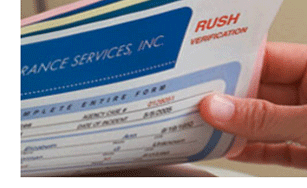 |
||||||||
| March 26, 2014 | ||||||||
| Rick's Tips - External dryer inspection |  |
|||||||
| · www.tappi.org · Subscribe to Ahead of the Curve · Newsletters · Ahead of the Curve archived issues · Contact the Editor |
Appvion marks 60 years of making carbonless paper
What began as a search for a better receipt paper resulted in the invention of an office productivity phenomenon that continues to be an indispensable part of the business world, even in today’s digital age. Sixty years ago the Appleton Coated Paper Company (today’s Appvion, Inc.) helped to introduce the first carbonless paper. It was known then, as it is today, as the NCR PAPER* brand of carbonless paper. The product was simply promoted as a new paper product that “eliminates carbon paper.” Some dubbed it the “no carbon required” paper. The first commercial sale took place on March 26, 1954. NCR PAPER* paper has been exclusively manufactured by Appvion since 1954 and has remained the number one brand of carbonless paper. The company has sold more than 14 million tons of the product since it was introduced. Carbonless paper revolutionized the forms industry by eliminating the mess and bother of carbon interleaves. Forms transactions became easier, faster and cleaner for businesses, institutions, and government and service organizations of all kinds. “What started as a niche product soon transformed the business forms industry,” said Andi Peeters, Appvion’s division director for carbonless and specialty papers. “Sixty years later carbonless paper continues to play a key role in communicating business information.” One way Appvion has helped carbonless paper maintain its relevance is by adapting it to new applications such as an array of digital and electronic equipment. Digital carbonless paper is ideally suited to produce on-demand multipart forms such as medical forms, credit applications, invoices, routing and packaging slips, and purchase orders via digital and laser printers. “Many people simply prefer the look, feel, convenience, mobility and security of a printed carbonless form. Our challenge, as it has been for the past 60 years, is to continue to provide carbonless products that make life easier and more efficient for our customers,” Peeters said. “We are dedicated to continuing our level of success and support.” HOW NCR PAPER WORKS The last sheet is a CF (coated front) sheet coated on its front side with a coreactant or receiver material. The middle sheet is a CFB (coated front and back) sheet, front-coated with receiver materials and back-coated with dye capsules. As pressure from a pen or printer is applied to the top sheet, the dye capsules on the CB surface break and interact with the CF receiver coating to develop a black or blue image on each copy. HOW NCR PAPER WAS INVENTED During 1952 and 1953, Barry Green worked with the late Lowell Schleicher, a colleague, scientist and inventor, to develop and refine the microencapsulation system. They co-invented the system that is used to produce much of today’s carbonless paper and filed the patent for the system on June 30, 1953. In the patent application process, Schleicher proved he was as capable of explaining his ideas as he was at developing them. “The examiner refused to believe that capsules existed and instead felt that the paper contained nothing more than oil and water emulsion,” said Schleicher in a 1987 company publication. “So I put my equipment and materials on his desk and demonstrated the entire process right in front of him.” The patent office approved the application. During the development of microencapsulation, Green, Schleicher and others went searching for paper companies capable of coating the pressure-sensitive microcapsules onto paper. The coating capabilities of the Appleton Coated Paper Company drew their attention. Bob Sandberg, another Green colleague, recognized that the product might be too time consuming and difficult to produce for larger paper companies. “The primary advantage Appleton had was its willingness to try anything,” said Sandberg. In 1987, TAPPI referred to carbonless paper as one of the outstanding paper-related innovations of the past half century, matched perhaps only by the invention of the xerographic imaging process. According to Green, the testimony to carbonless paper’s success is the public’s demand for it. Appvion is the leading manufacturer of carbonless and security papers, and also provides colored papers, coated specialty papers, grease-resistant papers, inkjet papers, fluorescents, digital specialty substrates, watermarks and custom dandy rolls, coatings and contract manufacturing, thermal papers, and Encapsys® microencapsulation. Appvion, headquartered in Appleton, Wis., has manufacturing operations in Wisconsin, Ohio and Pennsylvania, employs approximately 1,700 people and is 100 percent employee-owned. Please direct any questions to Bill Van Den Brandt (bvandenbrandt@appvion.com). * NCR PAPER is a registered trademark licensed to Appvion, Inc.
Now that you
are Ahead of the Curve, stay there by joining TAPPI. |
|||||||
 |
||||||||



 (Editor's note: Based on an April 24, 2014 press release from Appvion)
(Editor's note: Based on an April 24, 2014 press release from Appvion)